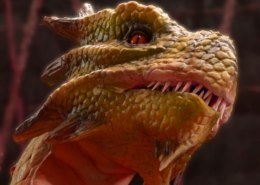What is the origin of dragons?
Mystical creatures many have termed them! No doubt, origin of dragons is one question that puzzles a curious mind. Hence, our team at Scholars ark thought it necessary to go into research on the mythology of dragons.
The word “dragon” comes from the ancient Greek word “draconta,” meaning “to watch,” suggesting that the beast guards treasure, such as mountains of gold coins or gems. But this doesn’t really make sense because creatures as powerful as dragons surely doesn’t need to pay for anything, right? It’s probably more of a symbolic treasure, not for the hoarding dragon but instead a reward for the brave knights who would vanquish the evil beast.
Dragons are one of the few monsters cast in mythology
Indeed, Dragons are one of the few monsters cast in mythology primarily as a powerful and fearsome opponent to be slain. They don’t simply exist for their own sake; they exist largely as a foil for bold adventurers. Other mythical beasts such as trolls, elves and fairies interact with people (sometimes mischievously, sometimes helpfully) but their main role is not as a combatant.
The Christian church created legends of righteous and godly saints battling and vanquishing Satan in the form of dragons. The most celebrated of these was St. George the Dragon Slayer, who in legend comes upon a town threatened by a terrible dragon. He rescues a fair maiden, protects himself with the sign of the cross, and slays the beast. The town’s citizens, impressed by St. George’s feat of faith and bravery, immediately convert to Christianity.
Next, veteran warriors “clad in bronze armor and armed with swords and shields … emerge rapidly from the earth and stand in ranks according to the way in which the dragon’s teeth were sown.” Apparently these draconis dentatasoldiers are a quarrelsome lot and will turn on each other lacking a ready enemy, so if you plan to do this, be sure your adversaries are nearby.
Scholars believe about the fire-breathing element of dragons
Scholars believe that the fire-breathing element of dragons came from medieval depictions of the mouth of hell; for example, art by Dutch painter Hieronymus Bosch, among others. The entrance to hell was often depicted as a monster’s literal mouth, with the flames and smoke characteristic of Hades belching out. If one believes not only in the literal existence of hell, but also the literal existence of dragons as Satanic, the association is quite logical.
Dragons are among the most popular and enduring of the world’s mythological creatures.
Dragon tales are known in many cultures, from the Americas to Europe, and from India to China. They have a long and rich history in many forms and continue to populate our books, films and television shows.
It’s not clear when or where stories of dragons first emerged, but the huge, flying serpents were described at least as early as the age of the ancient Greeks and Sumerians. For much of history dragons were thought of as being like any other mythical animal: sometimes useful and protective, other times harmful and dangerous.
“Its back has rows of shields tightly sealed together; each is so close to the next that no air can pass between. They are joined fast to one another; they cling together and cannot be parted. Its snorting throws out flashes of light; its eyes are like the rays of dawn. Flames stream from its mouth; sparks of fire shoot out. Smoke pours from its nostrils as from a boiling pot over burning reeds. Its breath sets coals ablaze, and flames dart from its mouth.”
The belief in dragons was based not just in legend but also in hard evidence, or at least that’s what people thought, long ago. For millennia no one knew what to make of the giant bones that were occasionally unearthed around the globe, and dragons seemed a logical choice for people who had no knowledge of dinosaurs.
Credit:
https://www.livescience.com › 25559-dragons



Leave an answer
You must login or register to add a new answer.